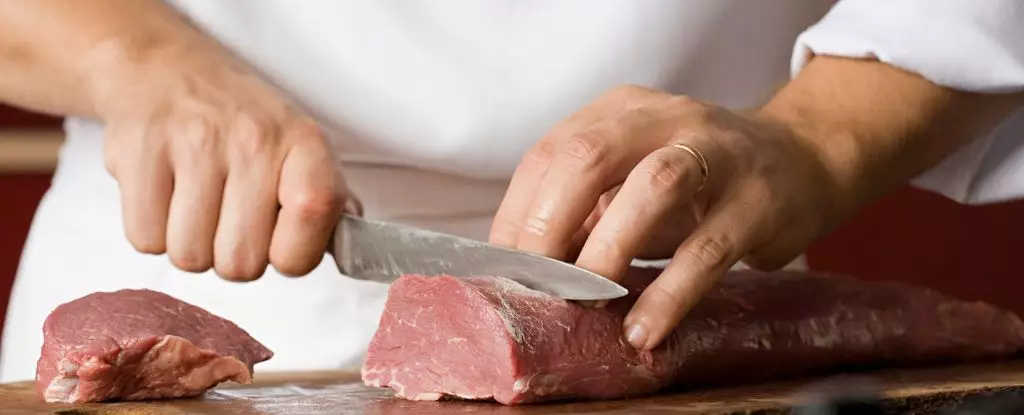The intriguing connection between nature’s bounty and public health risks often eludes people’s awareness, especially when it comes to the consumption of wild meat. A harrowing case from Florida shines a light on these hidden dangers, as a man in his 70s experienced severe health complications after consuming feral pig meat. The infection he contracted, linked to Brucella suis, is not only rare but also illuminates the possible risks lurking beneath the surface of our culinary choices. While many enjoy the thrill of hunting and eating feral game, they often fail to account for the pathogens that may accompany their meals.
Hunting is often romanticized in American culture as a pursuit that connects individuals to the land and their ancestral skills. However, this enchanting narrative must be tempered with the reality of the emerging health threats that accompany wild game consumption. The Florida man’s experience serves as a sobering reminder of the invisible risks inherent in these activities, particularly for individuals with pre-existing health concerns. The nature of brucellosis—a disease typically found in domestic animals—has evolved with feral swine acting as an unwitting reservoir for this clandestine bacterium.
The Insidious Nature of Brucella suis
Understanding the dangers associated with Brucella suis is crucial in shedding light on why this bacterial pathogen is so alarming. The bacterium is primarily transmitted from animals to humans, and its life cycle involves a complex interaction with the host’s immune system. In this unfortunate case, the man unwittingly exposed himself to the pathogen while handling raw feral pig meat devoid of protective measures. The absence of visible pathogens may lead individuals to assume food safety, but the reality is far more intricate.
Once introduced into the body, Brucella can evade immune responses by hiding within immune cells. This stealthy approach allows it to remain undetected for years, leading to delayed symptoms that are often misattributed to other conditions. The man’s experience illustrates this downfall, as he faced numerous misdiagnoses and inappropriate treatments over several years before the real nature of his ailment was discovered. With traditional blood cultures often failing to identify such cunning pathogens, it becomes imperative for clinicians to stay vigilant and consider rare infections, especially when unusual clinical presentations arise.
Complications Arising from Medical Devices
The presence of implanted medical devices in patients with infections poses additional challenges. In the Florida case, the infection ultimately infiltrated the man’s defibrillator—an aspect that complicates both diagnosis and treatment. Defibrillators are designed to regulate life-threatening arrhythmias, yet they also become potential reservoirs for pathogens due to their limited blood supply. Such factors necessitate a proactive approach in managing infections that may emerge in these uniquely vulnerable implants.
As medical technology advances, the intersection between innovation and infection control requires higher standards of awareness among healthcare providers and patients alike. The hesitation to remove an infected device can lead to prolonged suffering, as seen with the Florida man’s journey. In a situation where time could mean the difference between life and death, prompt action becomes essential. In this case, the man’s eventual treatment facilitated a resolution, but it’s crucial to recognize how necessary it is to consider the risks posed by infections surrounding medical devices.
A Broader Implication for Public Health
This case transcends individual health—it brings forth crucial discussions regarding public health, food safety, and the complexities of modern medicine. As feral pigs proliferate in certain regions of the United States, the potential for zoonotic diseases like brucellosis to wreak havoc on unsuspecting humans grows substantially. Feral pigs move through a range of environments, posing risks to not just hunters but to the broader population, especially in developing methods of managing these wild animals.
Consequently, the implications of this case should inspire public health initiatives aimed at educating potential hunters and consumers about food safety. The risks associated with raw meat handling, particularly from wild sources, underscore the need for improved awareness and protective measures. Public health campaigns and educational programs can keep individuals informed about the potential dangers of consuming wild game, urging caution and the implementation of safe food practices.
In light of such developments and the continuing interaction between humans, animals, and pathogens, our responsibility extends beyond personal vigilance. We must advocate for shared awareness and understanding regarding the ever-evolving landscape of health risks connected with wildlife consumption.


Leave a Reply